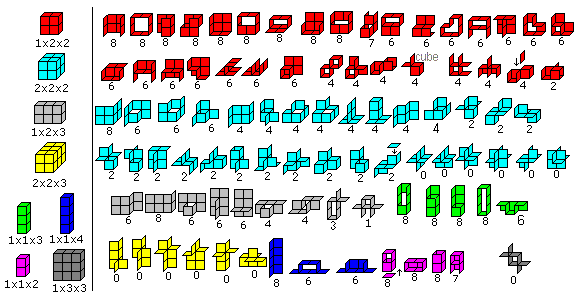It turns out that all feasible configurations, i.e. configurations that are not excluded using the known invariants, can actually be constructed. This means that the known invariants (metric and topologic) form a complete set of invariants. Following the links below you get a complete list of the octominoid configurations.
The color code corresponds to the size of the bounding box (e.g. red for configurations with a bounding box 1x2x2)
and follow the convention fixed by Jürgen Köller in
http://www.mathematische-basteleien.de/magics.htm.
They are further grouped based on the number of tiles of the octominoid that lie on the boundary of the bounding box. For example: box 2x2x2 (+6) means that the bounding box is a 2x2x2 cube and the configurations have 6 of the 8 tiles lying on the boundary of the bounding cube.

paolini@dmf.unicatt.it)